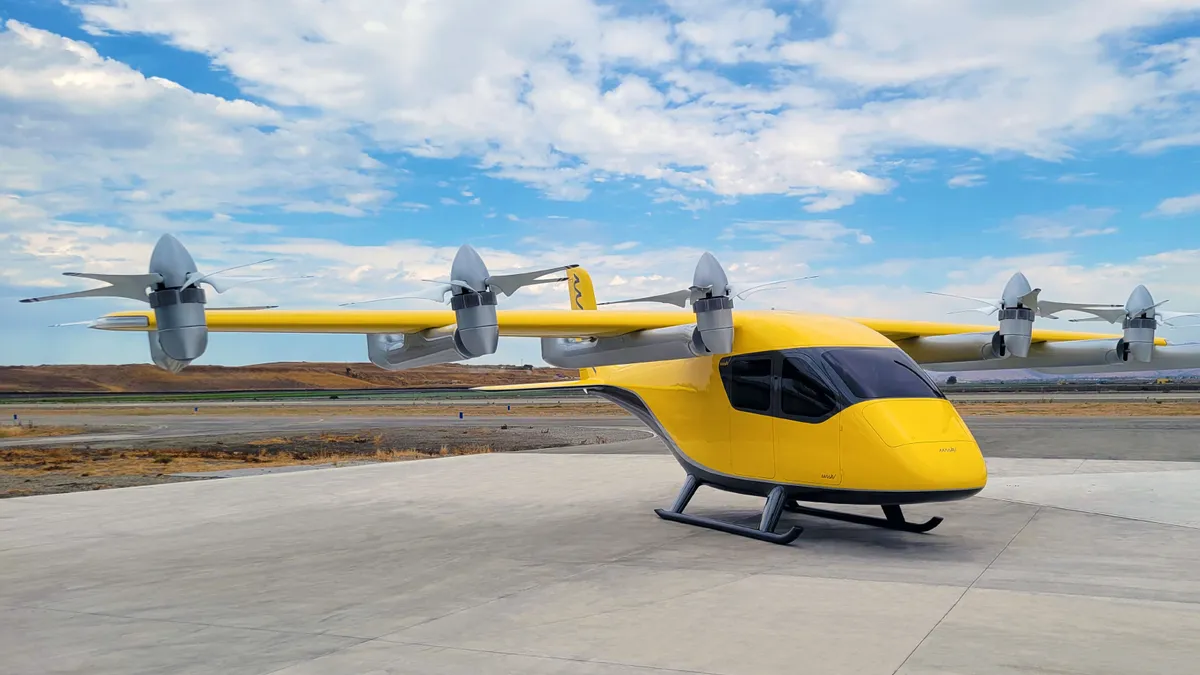Sugar Land, Texas entered into a partnership Feb. 21 with Wisk Aero, a Boeing subsidiary, to bring pilotless air taxis to the greater Houston area. Electric vertical takeoff and landing aircraft could be flying autonomously from the Sugar Land Regional Airport as soon as 2030, said the city’s deputy director of aviation, Mitch Davies.
The regional airport, which serves corporate and general aviation, is about 25 miles southwest of Houston, but the drive can take up to an hour or more in heavy traffic. Davies said airport leaders had been looking at air taxis for a couple of years but were surprised when Wisk called them. “I’d never heard of Wisk,” he admitted.
Davies said that Wisk identified Houston as a potential service area because of its large size, low access to public transportation and congested roads. Sugar Land Regional Airport is used regularly by Fortune 500 companies, and its aeronautical fuel sales contribute to the city’s budget. The airport’s 2019 master plan aims to develop sites for retail, office, industrial and other uses. The plan also “identified air taxis as a possibility for the future,” Davies said. “So when this opportunity presented itself, we really were immediately interested in partnering with [Wisk].”
The city still has many questions and issues to resolve, Davies said of the new partnership. “When we get those answers, it’s going to give us a better understanding from an infrastructure perspective and from funding,” he said. Additional parking, a terminal to serve Wisk flights and anticipated passenger counts are among the open issues. And because the aircraft are electrically powered, charging capability will be essential. Davies said the city has been in contact with CenterPoint Energy, the local utility.
Wisk’s air taxis will also need vertiports in the greater Houston region. Federal Aviation Administration guidance published last year urged cities to plan for eVTOL infrastructure, allowing room for growth and connecting with surface transportation when possible. A 2023 McKinsey & Co. report estimated that large cities would need 85 to 100 vertiports by 2030, the year Wisk intends to be flying commercially.
There’s also community reaction to contend with. “Helicopter traffic is not viewed favorably in the Houston area,” Davies said. Although eVTOLs are quieter than helicopters, he said, “I will definitely be keeping the community involved and [will be] engaged in looking for their feedback.”
Davies sees economic benefits to the city in terms of newly created jobs directly connected to the air taxi service, such as customer service personnel and operations, maintenance, and ground crews. Other jobs could be created, he believes, through entertainment and restaurant venues that would be more convenient to visit with the air taxi service.
Unlike competing eVTOL developers such as Archer Aviation and Joby Aviation, which intend to start off with piloted aircraft, Wisk is going all-in on self-flying eVTOLs. The company began development in 2010 and is on its sixth generation of aircraft. On July 26, 2023, Wisk completed the world’s first public demonstration flight of a fully autonomous air taxi, according to a press release. The company subsequently demonstrated pilotless operations at the Long Beach, California, airport in October. Human supervisors on the ground will monitor every flight and intervene when necessary, the company says.
“The commitment for this is going to be a safe operation,” Davies said. “I’m really excited to see this really roll out.”












